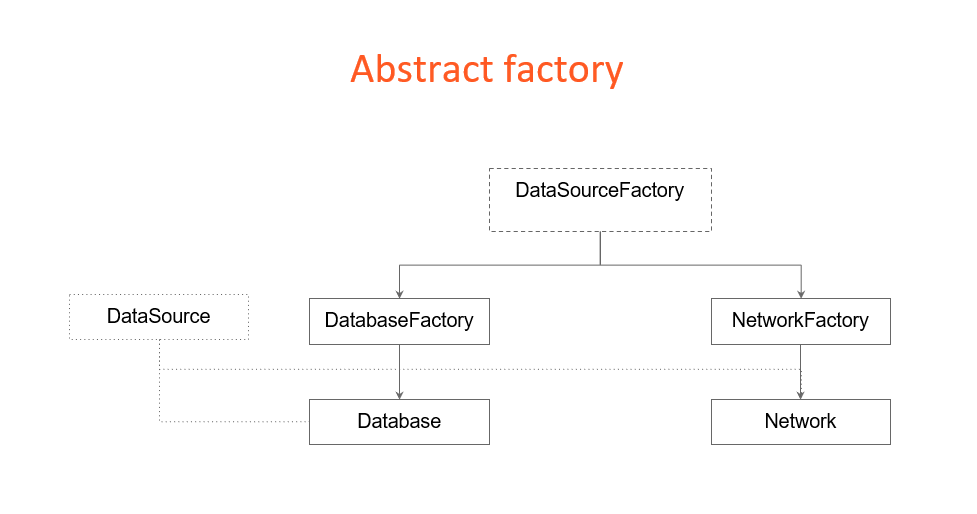Hello, fellow developers!
Today, we’re diving into the fascinating world of design patterns, specifically focusing on the Abstract Factory design pattern. Abstract Factory is a powerful tool that provides an additional level of abstraction above the Factory Method design pattern, enhancing flexibility and extensibility in our code.
Table of contents
Open Table of contents
Sections
Understanding the Need for Abstraction
To comprehend the essence of the Abstract Factory pattern, let’s envision a scenario where we need to display data from various sources. These sources could be a database, a network storage, or any other potential data source. However, we want to keep our options open for adding more data sources in the future without restricting ourselves from the outset.
Here’s where the Abstract Factory pattern steps in. We introduce a “data source factory” abstraction. Instead of knowing exactly which data source we need, we abstract this knowledge into a higher level. The client should be oblivious to the specifics of the data source. This level of abstraction fosters separation of concerns and allows for easier testing.

The Key Principles of Abstract Factory
The Abstract Factory pattern offers several key advantages:
1. Abstraction and Separation of Concerns
The pattern allows us to access functionality without being burdened by implementation details. We abstract the creation of objects, promoting a clean separation between the client and the concrete implementations.
2. Flexibility for Future Additions
By abstracting the creation of objects, we leave room for future expansion and addition of new functionalities. This extensibility is vital in evolving software projects.
3. Easier Testing
Separation of concerns resulting from this pattern facilitates easier testing. The decoupling of components enables testing of individual parts without impacting others.
Practical Implementation
Now that we have a theoretical understanding of the Abstract Factory pattern, let’s delve into a practical example in Java. We start by defining a set of interfaces: Service and Response, each representing a component of our data source.
public interface Service {
String runService();
}
public interface Response {
String getResponse();
}
We then create an abstract factory, DataSourceAbstractFactory, which declares methods for creating a Service and a Response.
public interface DataSourceAbstractFactory {
Service createService();
Response createResponse();
}
To implement this pattern, we create specific factories for each type of data source, such as DatabaseFactory and NetworkFactory. Each factory implements the DataSourceAbstractFactory interface and provides concrete implementations of Service and Response.
public class DatabaseFactory implements DataSourceAbstractFactory {
// Implementation for DatabaseFactory
// ...
}
public class NetworkFactory implements DataSourceAbstractFactory {
// Implementation for NetworkFactory
// ...
}
Finally, we create a client class that utilizes the abstract factory to obtain the required Service and Response instances.
public class Client {
private Service service;
private Response response;
public Client(DataSourceAbstractFactory factory) {
this.service = factory.createService();
this.response = factory.createResponse();
}
public void communicate() {
if (service != null && response != null) {
System.out.println("Service: " + service.runService());
System.out.println("Response: " + response.getResponse());
}
}
public static void main(String[] args) {
Client client1 = new Client(new DatabaseFactory());
client1.communicate();
Client client2 = new Client(new NetworkFactory());
client2.communicate();
}
}
Conclusion
The Abstract Factory design pattern provides a powerful mechanism to encapsulate the creation of families of related objects without specifying their concrete classes. By abstracting object creation, we enhance the flexibility, scalability, and maintainability of our codebase. Understanding and effectively utilizing this pattern is essential for building robust and maintainable software systems.
Happy coding!